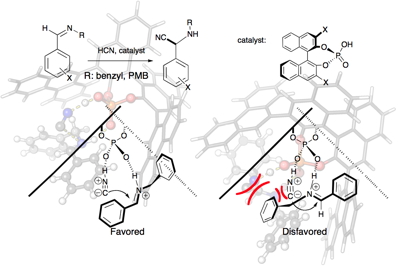
Professor in Chemistry
We use chemical informatics, computational chemistry, machine learning and AI to investigate molecules and to discover more about their structure, reactivity, analytical data and properties.

(Full list of publications)
Professor Goodman discusses his research
Publications
Towards automatically verifying chemical structures: the powerful combination of 1H NMR and IR spectroscopy
– Chemical Science
(2025)
(doi: 10.1039/d5sc06866e)
Introduction to Computational Organic Chemistry
– Org Biomol Chem
(2024)
22,
7072
(doi: 10.1039/d4ob90102a)
Towards automatically verifying chemical structures: the powerful combination of ¹H NMR and IR spectroscopy
(2024)
(doi: 10.21203/rs.3.rs-4719113/v1)
Leveraging Language Model Multitasking To Predict C-H Borylation Selectivity
– J Chem Inf Model
(2024)
64,
4286
(doi: 10.1021/acs.jcim.4c00137)
Suppressing Cis/Trans ‘Ring‐Flipping’ in Organoaluminium(III)‐2‐Pyridyl Dimers–Design Strategies Towards Lewis Acid Catalysts for Alkene Oligomerisation
– Chemistry A European Journal
(2024)
30,
e202303872
(doi: 10.1002/chem.202303872)
HSQC Spectra Simulation and Matching for Molecular Identification
– Journal of chemical information and modeling
(2024)
64,
3180
(doi: 10.1021/acs.jcim.3c01735)
Every atom counts: predicting sites of reaction based on chemistry within two bonds
– Digital Discovery
(2024)
3,
1878
(doi: 10.1039/d4dd00092g)
Every atom counts: predicting sites of reaction based on chemistry within two bonds
– Digital Discovery
(2024)
3,
1878
(doi: 10.1039/d4dd00092g)
Potential for Machine Learning to Address Data Gaps in Human Toxicity and Ecotoxicity Characterization.
– Environmental Science and Technology
(2023)
57,
18259
(doi: 10.1021/acs.est.3c05300)
Reaction dynamics as the missing puzzle piece: the origin of selectivity in oxazaborolidinium ion-catalysed reactions.
– Chemical Science
(2023)
14,
12355
(doi: 10.1039/d3sc03009a)
- 1 of 32
